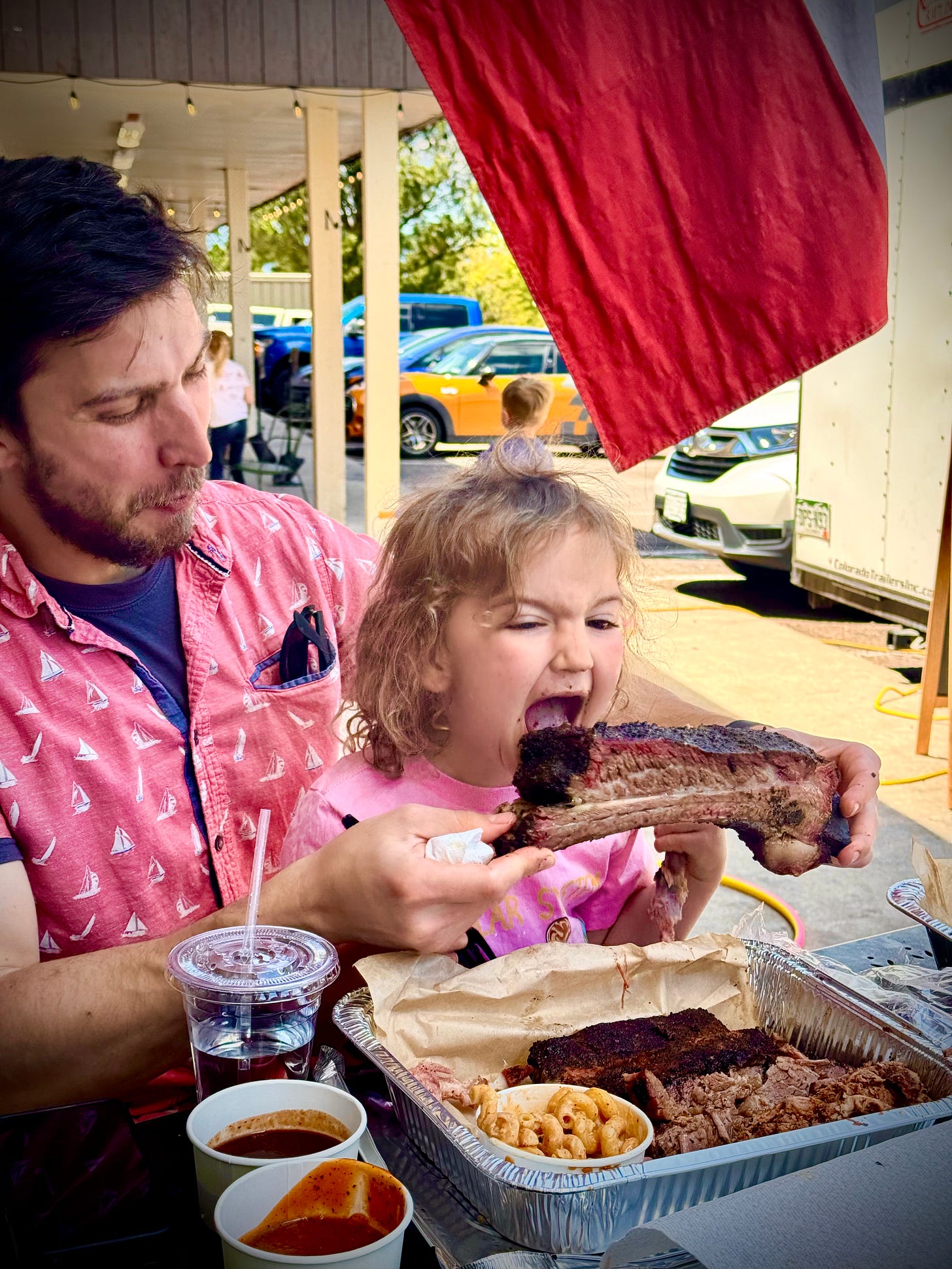Teas, a tiger and the big picture of small-scale food systems
Boulder's stunning Tajik teahouse; a roaring retro diner revival in Denver (part one of a three-week series!); spreading seeds to build local food communities + more food & drink haps
*Side Dish will be in travel mode over the next few weeks, so I’m relying on high-quality guest contributions from trusted foodie friends to help cover the bases while I’m out in the field reporting. Regular programming will resume in June. Cheers!
A visit to Boulder’s Dushanbe Teahouse
Story and photos by Lauren Hug
A few years ago, I participated in a conversation about social media and civic engagement with a delegation of socially- and economically- conscious influencers from Tajikistan through a Colorado Springs World Affairs Council program. At the time, the U.S. Embassy in Dushanbe, the capital of Tajikistan, had partnered with Tajik influencers to produce positive, fact-based content. It performed 50 times higher than comparable embassy-produced content and made measurable impact on public sentiment toward the U.S.
As we were chatting after the formal conversation, one of the influencers asked if I'd been to the Tajik teahouse. I admitted I'd never heard of it, so I took to the interwebs to find out more. Boulder Dusanbe Teahouse, a gift from Boulder’s sister city, Dushanbe, was created by more than 40 Tajik artisans working for three years on the hand-painted ceiling, carved columns and ceramic panels. They used skills handed down from generation to generation within families. Though it opened in 1998, more than a decade before the advent of Instagram, the colorful, ornate, intricate patterns make for enticing social media shots.

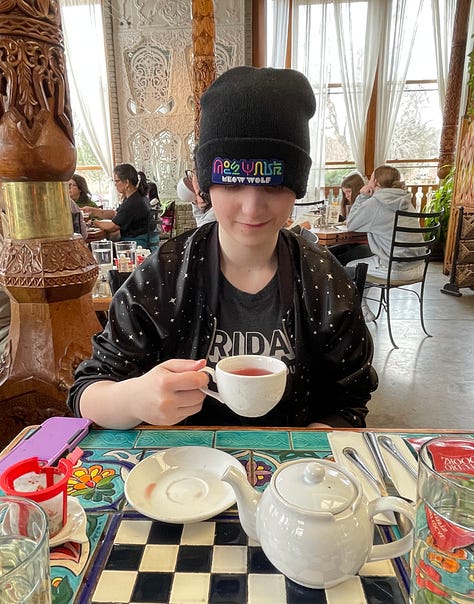




I visited recently, and the in-person experience far exceeds the Instagram expectation. Sitting across the street from Central Park and alongside Boulder Creek, the exterior is a delight of ceramic nature motifs in blues, greens and pinks. A rose garden surrounds the walk to the entrance, but it wasn't yet in bloom when we dropped by earlier this spring, so I'm already planning a trip back in late June.
The interior is even more breathtaking; a magical, sacred space filled with art, light and greenery. According to their website, a message carved in the ceiling reads “artisans of ancient Khojand whose works are magical." It's tempting to spend hours here, transported to another time and place. And it would be easy to do so, given the huge selections of teas to choose from. The options overwhelmed us, but our server was knowledgeable and made excellent recommendations. My daughter's pot of trademarked Pomegranate Rose tea poured a lovely pink, tart from hibiscus and slightly sweet; it’s a delicately fruity drink. I had the house chai, which was good, but next time I’ll let the server guide me toward a more unique choice. If you fall in love with a tea, there’s a small retail section where you can pick up loose leaf blends.
As for food, we only had time to sample one dish and it was mindblowing. On our server’s advice, we ordered the Malaysian Sambal Curry with chicken, which delivered a phenomenal mix of spicy-but-not-too-spicy chili and coconut with some of the most flavorful mushrooms I've ever eaten. I can’t wait to try more of the internationally-inspired, eclectic menu. The prices are incredibly reasonable given the quality of tea and food, the spectacular surroundings and the fact that the teahouse is Michelin-recommended (something I didn't realize until I spotted the honor on our way out). If you're near the Boulder area, this is a must-try.
Chris drinks Denver, Pt. 1: Roar for me, baby
Story and photos by Chris Aaby
Hey, I'm Chris, a nature-loving, coffee-sipping Coloradan with a fondness for discovering hidden gems. Whether I'm road-tripping across our beautiful state for work or catching a show in Denver, I'm always on the lookout for fun and tasty restaurants. While I live in Colorado Springs, I love to share the places I discover outside the city, for those times when a meal is needed far from home.
My husband and I have season tickets to the Denver Performing Arts Center, so we make the drive up at least once a month. Theater dining is great because those 7 p.m. curtains often mean snagging dinner reservations at 5 p.m., which opens up a whole world of opportunity!
On a recent trip, we checked out Champagne Tiger, a stylish French-American diner occupying the space formerly known as Tom's Diner — a beloved Denver classic with iconic mid-century Googie architecture. The new spot beautifully honors its vintage charm while adding a chic, modern twist, making us feel as though we have been transported to Palm Springs.
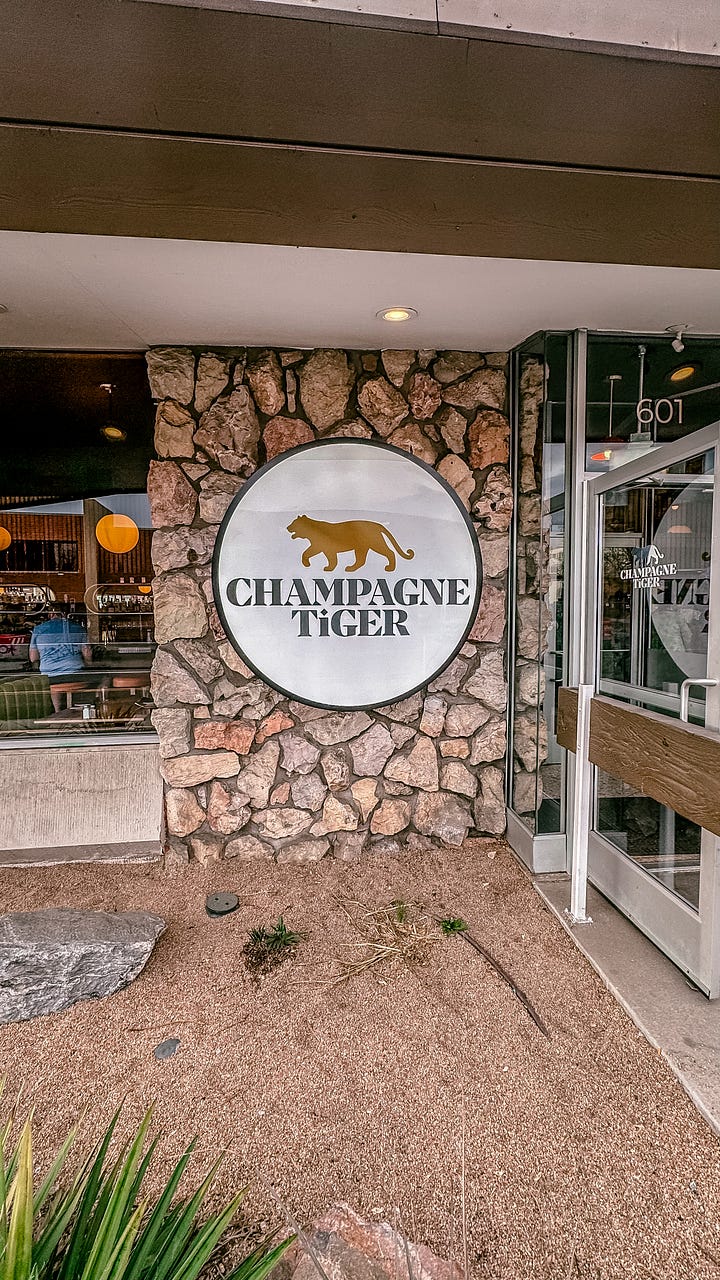

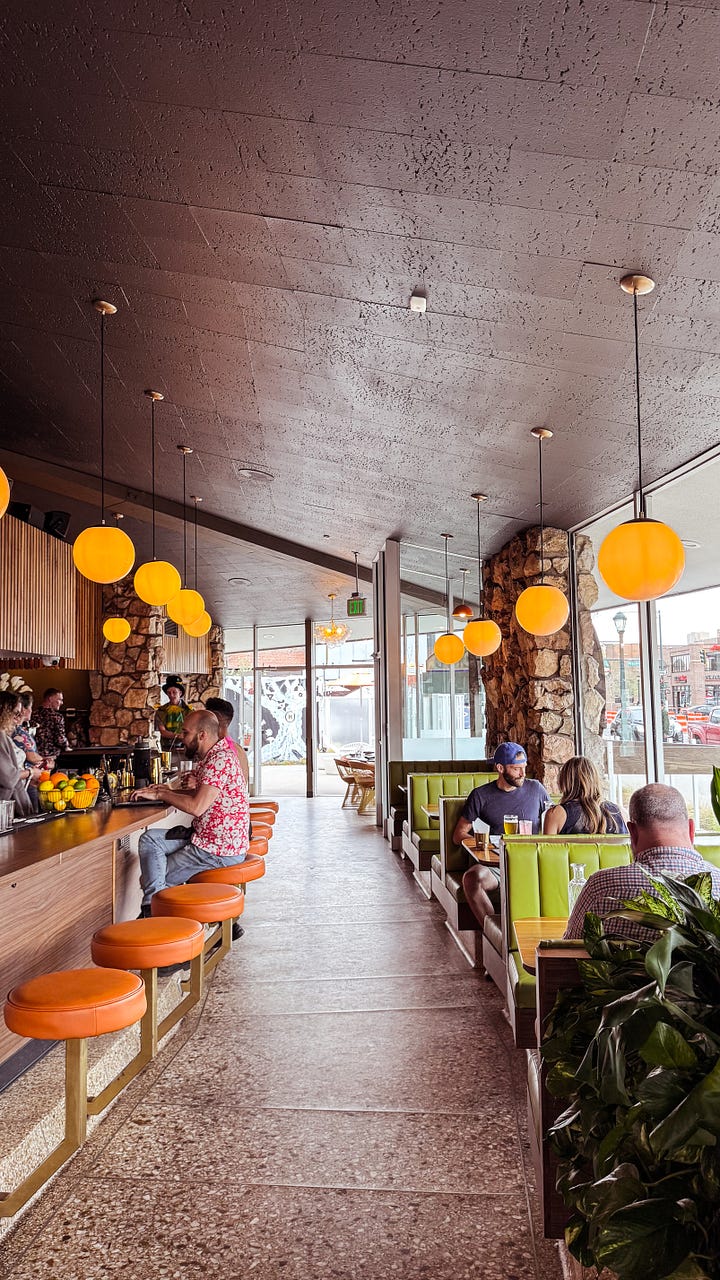
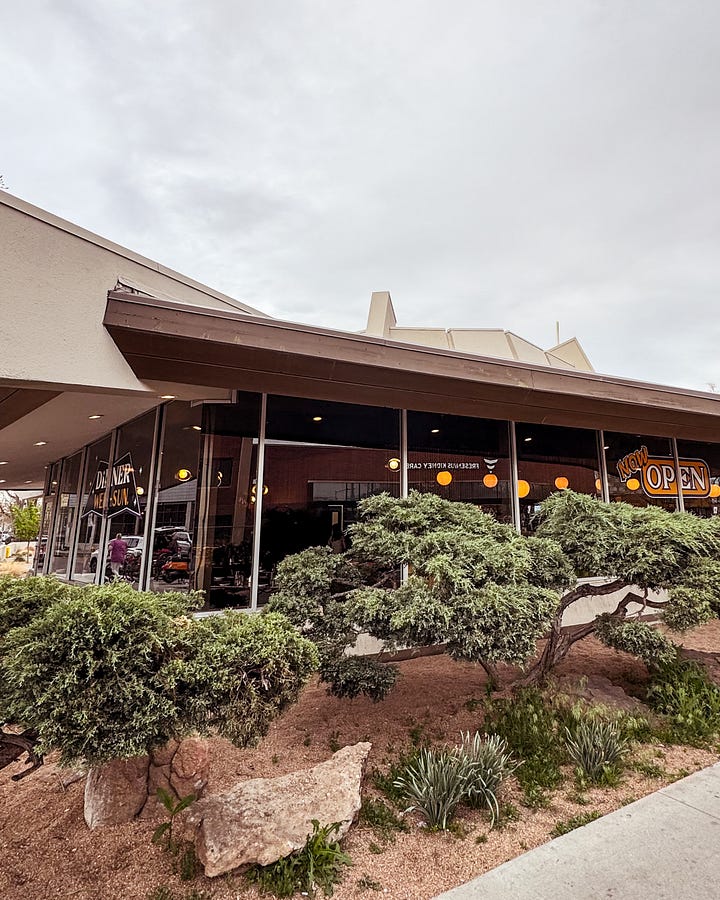
We both started with some cocktails; I had the espresso martini (more on my love of these in next week’s Side Dish), and the husband had a classic martini. Both were excellent.
The menu features a mix of classic diner fare with a French twist. The standout dish of the evening was undeniably the Loaded Tater Tot Waffle topped with bacon, pecorino, crème fraîche and chives. We ordered this to start, and it was perfectly crisp and full of flavor. We could have also opted for the Royale version, which is topped with caviar, crème fraîche and chives.
Since Champagne Tiger is a diner, we opted to try their burgers for dinner. I got the "felony misdemeanor style," featuring a spicy jalapeño relish (with a bonus of a dollar donated to Black Pride Colorado). Both burgers came alongside generous portions of crispy fries and waffle fries. A great nod to the long history of Tom’s Diner in this spot.
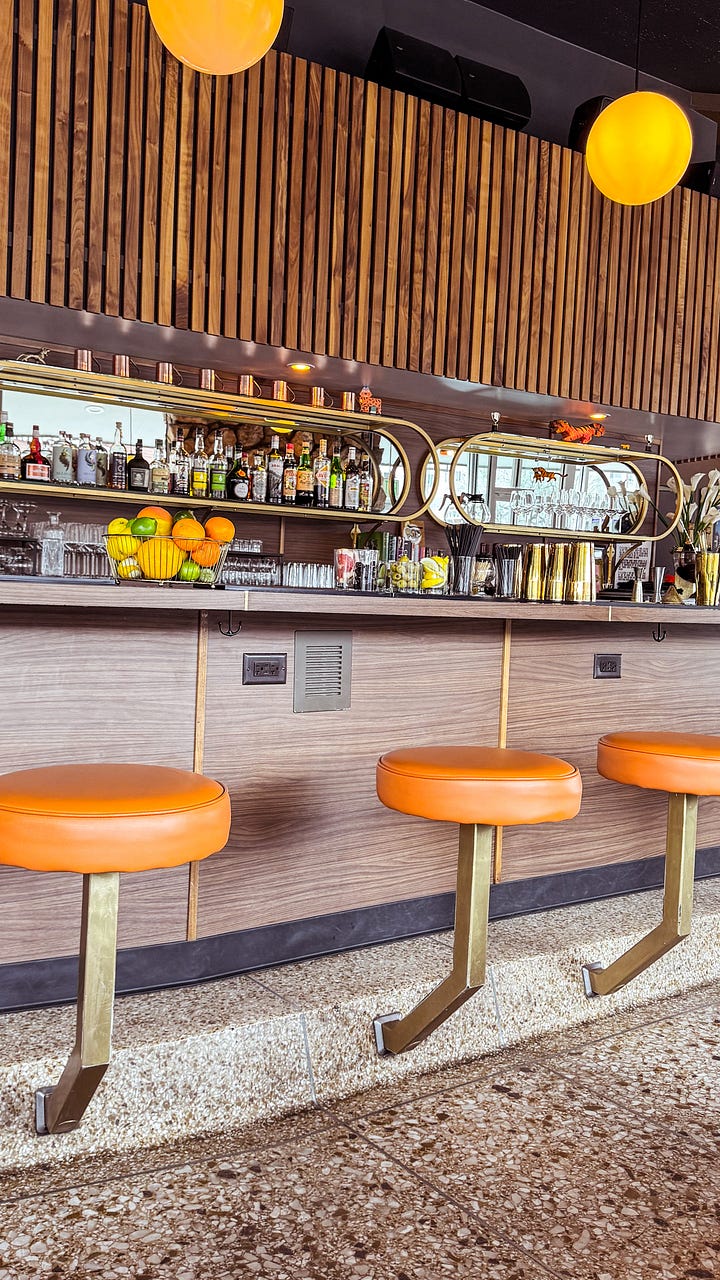
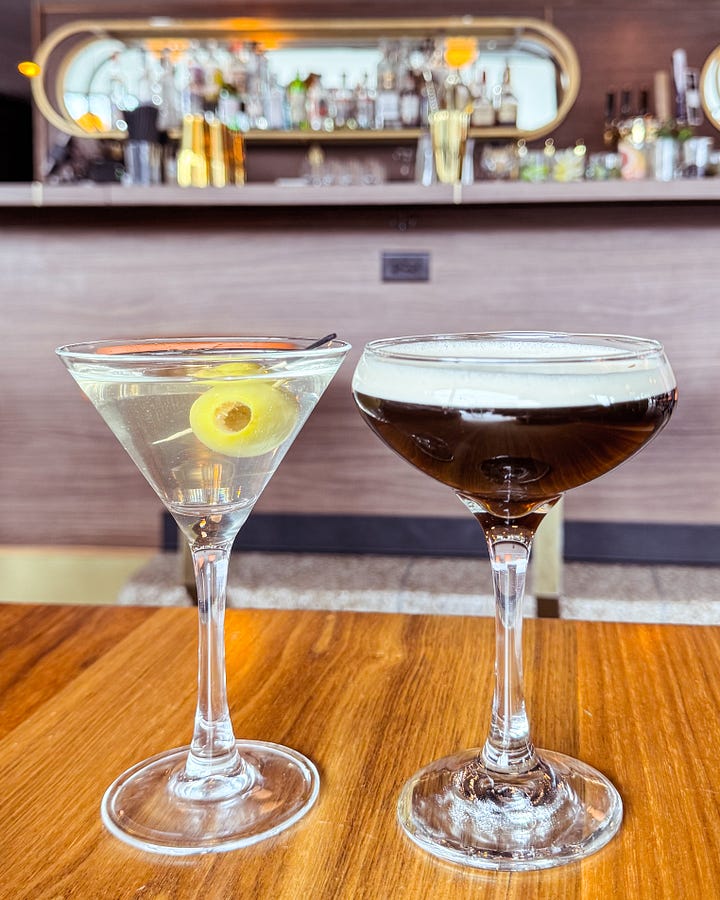

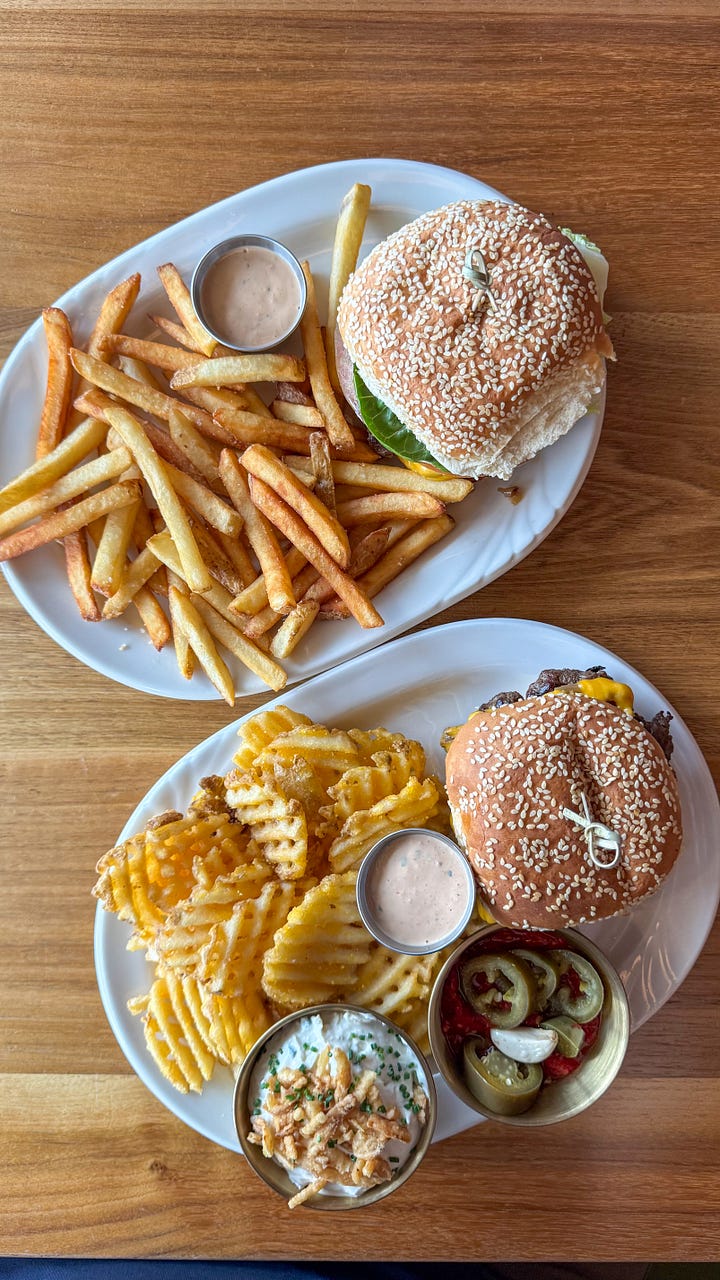
I’ve already marked my calendar to make a reservation for their weekend brunch, which looks fabulous and features local drag performances that promise as much flavor as fun!
Loving food, healthy communities
By Jon Huang
Health … is at once wholeness and a kind of unconsciousness. Disease (dis-ease), on the contrary, makes us conscious not only of the state of our health but of the division of our bodies and our world into parts. — Wendell Berry
When Luigi Mangioni murdered United Healthcare CEO Brian Thompson in New York City last year, the public reaction surrounding the event was telling. It was a story not just of a misguided youth or greedy corporations, but a story of a frustrated, sick and unhealthy society.
As a former physician here in Colorado Springs, I saw firsthand the effects of a fragmented, convenience-shackled, modern society. Day after day, patient after patient, prescription after prescription. As I learned things beyond my medical training, a greater story emerged. So much of my training focused on external and genetic forces that contributed to disease. I worked in a system struggling to prioritize prevention.
So why am I here now, writing in a food newsletter?
Because good medicine begins with whole foods, and whole foods begin with love. Love for our neighbors. Love for creation. A love that bears fruit. How does this pertain to food?
Our food does not come from a grocery store or from large corporations. It comes from the earth and the farmers who cultivate the land. It is shaped by forces beyond our control.
In February, I attended a farming panel discussion in Colorado Springs at Food to Power. It spoke of the destructiveness of our industrialized food system and the ways the current regenerative agriculture movement was working to improve the health of our soil. Healthy soil minimizes disruption to the land, requires diverse planting practices, livestock integration, and regular returning of organic matter to the soil. All of this attracts beneficial microorganisms in the soil, which strengthen the plants and enrich the food grown in them.
One attendee spoke about how meaningful changes began on the local level, over meals, with people gathering to cook and to share. When we learn where and how our food is grown and support the people who grow it, we are supporting farming and practices that demonstrate love for the environment and for ourselves.
Our fast food, ultra-processed, convenience-driven culture has distorted efficiency and overprioritized shelf-life. It reduces the need to be intentional about who we buy our food from and what we eat. It trades the diversity of nature for synthetic homogeneity. It robs food of its seasonality, context, culture and its relationship to the land. It disproportionately harms society’s most vulnerable yet harms us all. It exploits local communities and compromises the relationship we have with our producers.
Food has always been costly — costly to the farmer and to the land, but we have allowed a system that has detached us from those costs at great detriment to all. As consumers we need to stop relating to our screens and begin relating to our neighbors, including our farmers.
Good farmers appreciate how delicate the environment is and how a good crop can be eliminated in hours. They acknowledge their smallness and how their survival depends on forces much greater than them. A good farmer relates to the land, understands both its limitations and its processes, recognizes when to let nature take its course, when to wait, and when to intervene. This requires good stewardship, with the understanding that every living thing grows and dies. In that death, new life is born. There is no life without sacrifice.
Good farming, like good medicine, is not an individual endeavor. It requires patience, community support and care.
When I speak to local farmers who are trying to improve the soil, grow good food and humanely care for the animals I learn that they face labor challenges, financial constraints and market and systemic challenges including corporate consolidation. They encounter a public with an impoverished understanding of their food and even lower appreciation for their way of life. They exist in a system where they receive a fraction of the profits with ever rising costs of production and land. Many who remain are driven by deep sense of mission and sustained by even deeper roots within their communities.
As a society, we have forgotten the fundamentals of a healthy existence, trading community for convenience. Quality food is produced by healthy community. It brings people together to participate in a harvest celebration.
For this reason, I write about food, about farmers and the work they are doing. These are issues that affect us all.
Does this mean that all of us must sign up for a Community Supported Agriculture (CSA) program? Or that we must all become vegetarians or buy only locally raised meats? Does it mean we should all start working on farms or gardening?
No. It requires arguably more.
We must learn about our local food systems, get to know and support the people who are trying to maintain them. We must rediscover our food and reclaim our culture. We must have uncomfortable conversations with people with whom we might not otherwise associate and learn from those with whom we disagree. We must ask the tough questions not only of others but of ourselves. We must consider how our lifestyles and urban growth affect our neighbors in the fields, the systems we are supporting in the manner and what we buy. We must become members and not mere consumers of our food systems.
To quote Berry once more, “I think the great problems call for many small solutions, but for that possibility to attain sufficient standing among us, we need not only to put the problems in context but also learn to put our work in context.”
As he said, disease is division. Health is wholeness. In other words, we must love, and with this comes sacrifice. The Presbyterian minister Eugene Peterson once said, “Love is the most context-specific act in the entire world. It cannot be done in general. It has to be done one person at a time, one situation at a time.”
For some, this may mean slowing down our lifestyles or giving up conveniences of having certain foods. For others, it may be adjusting our priorities. This may involve paying with cash to save local businesses on the credit card fees, learning to cook, or composting food scraps. Some may be called to grow food from their garden for neighbors or organize gatherings and homecooked meals. Consider your gifts and interests. Contextualize your work to serve your community.
In Colorado Springs, we are the city of Fast Food Nation. We are the city whose growth many farmers south of us fear. We are the city where Burger King ads once lined school walls.
Here’s the good news. There are people here who care about these things and are working towards meaningful change. There are businesses and organizations already working to cultivate a healthier, more intentional, relational food culture. There are local farms open for visitors to come and learn about what they do.
Farmers in the Colorado Conservation Tillage Association are working to help larger farms to transition to more sustainable practices. Ranch Foods Direct has been working to rebuild local markets. Others like Hunt or Gather and Bread & Butter Neighborhood Market connect family farms with local markets. Smith Farms and Ahavah Farms have been growing, selling and donating directly to their local communities for over a decade. Emerge Aquaponics and Mountain Springs Church grow aquaponic produce year-round for the local community. Organizations like Food to Power runs a city composting program, hosts educational events and a community garden. Southeast Food Coalition, in addition to their community garden initiatives, will be starting a farmers’ market this summer on the southeast side of town. The El Paso County CSU Extension office hosts regular programs on food and agriculture throughout the year.
It will take all of us to support these efforts, and it begins with asking about, listening and hearing the stories of our food from those who raise and prepare it. None of us has all the answers or is doing these things perfectly. There are flaws and constraints in everything we do, but it’s about cultivating relationships, not perfection. No matter where you are right now, you are potentially part of the solution.
This is not an us versus them situation. Even in the darkest places, allies exist. This is all of us acknowledging our own issues and need for help, confronting our own complicity, getting our hands dirty and welcoming others to join. Dream small. Start local. Plant roots.
Ask questions about the food you eat, seek answers, and knock on the doors in your community. Sow seed locally and in doing so, you may find your place in the greater ecosystem.
The harvest is plentiful but the workers are few. Come, see and join the work already happening.
— Jonathan Huang is an independent journalist in Colorado Springs with an interest in local food and agriculture.
Boba-licious
By Matthew Schniper
Sharetea opened two years ago at 8834 N. Union Blvd., near the Research Parkway intersection (in the same shopping center as Kura Japanese and Pizza Time Colorado). It’s a franchise location, spawned from a brand that started in the early 90’s in Taiwan. There’s now more than 400 locations worldwide; five of those are in Colorado, though this is the sole Springs location.
I find almost all boba tea menus a little overwhelming with options and customizable drinks, and Sharetea proves no exception. I study the menu too long, but actually find some joy and fun in that just because it feels like adventure awaits with any decision.
I’ve randomly dropped in while on this side of town and find it lucky that a new menu update has just happened, so there’s an unintended timeliness to my overdue visit. The manager who’s assisting me explains that most ingredients are brought in from Taiwan, including non-dairy creamer bases that make up the milk teas. She points out fresh milk options too, and other non-dairy alternatives, noting that drinks are sweetened with either brown sugar or honey. She recommends one of the newly added matcha series drinks.

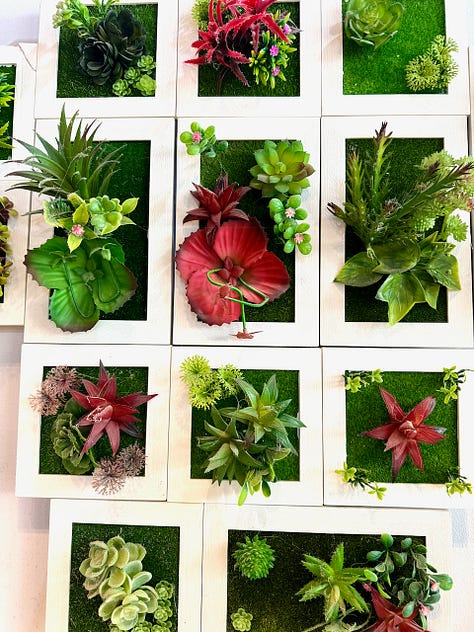
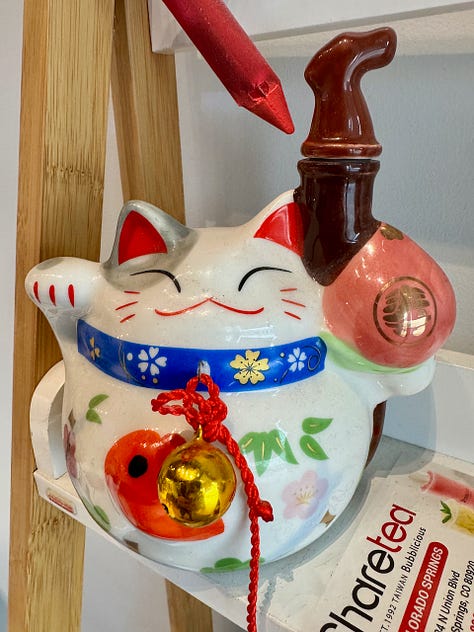


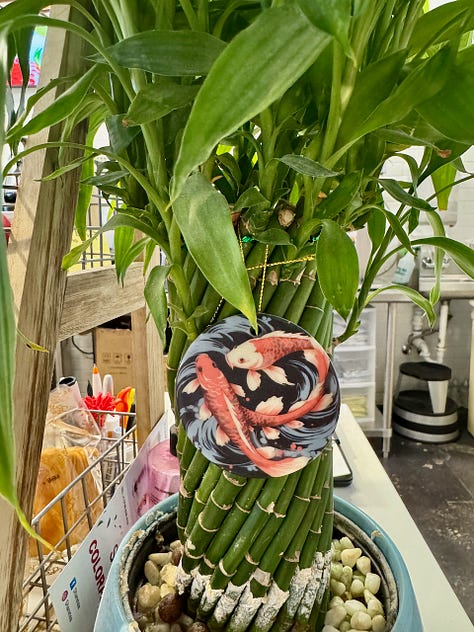
I take her up on that suggestion with a fresh milk mango matcha (ordered 30 percent sweet from a scale that leads all the way to tooth decay, er um, 100). It’s easily my favorite sip of the trio I order. The matcha’s astringency and green tea grassiness folds beautifully into a clean mango fruit flavor with a faint black tea back-note that also somehow evokes apricot essence. Complex and delightful.
Next up I get the Coffee Creama (again 30 percent sweet) with coffee jelly added. The body holds a toasty dark coffee flavor, also reminding me of cappuccino ice cream, with a mildly bitter finish amplified by the redundant jelly and balanced by the sweet “creama.” What that is to my understanding is what’s also called “cheese tea” in Taiwan, being a salty cream cheese and sweet cream mixture that’s airy and pleasing to pull your boba straw through as a first and last texture and flavor if you plunge up and down. Think cold foam, but much richer with the spike of salt amplifying the sweetness. It’s good.
Lastly, the Halo-Halo (ordered with no extra sweetener) is based on the popular Filipino dessert, with a coconut creamer and taro base (hence the bright purple layer) plus crystal and pearl bobas and pudding (I’m unsure what flavor because it quickly becomes a kitchen sink and I missed that detail). The manager recommends adding red bean for more authenticity and I do, which means there’s a sugary meal at the bottom of the cup in the end. It all hits fairly tropical and lightly floral, with enough taro punch to make me suddenly crave Josh and John’s Purple Mountain Majesty ice cream. (One dessert at a time, Schniper. Calm thyself.)
Side Dish Dozen happenings
Bristol Brewing Company: Our Beers & Gear Outdoor Expo is May 31 from 2-5 p.m. We're gearing up for the season with local gear shops, outdoor groups and nonprofits. We’ll have a mobile climbing wall, a Survival University demo, bike maintenance station and more. After the Expo, join us in the Ivywild Gym at 5:45 for the RITUAL Mountain Bike Film Tour. Let's go!
Rasta Pasta: We are often asked, what is the best thing on the menu? That's a tough one, but our hands-down bestseller is the Chicken Montego Bay. Our fusion takes on the classic Chicken Alfredo, with jerk chicken, pineapple, fresh veggies and a must-try Alfredo sauce with white wine and pineapple juice folded in.


Four by Brother Luck: Come see us for happy hours, 3-5 p.m., Tuesdays-Sundays. Or drop in for Wine Wednesdays, with half-off bottles under $75. Special vegan menu available. At our sister outfit Eleven18 book a special chef’s counter experience with Chef Brother Luck, or take the upcoming “From Scratch: Tacos & Salsas” class on May 27 or 29.
Red Gravy: Join us for Meatball Mondays, Wine Wednesdays, and Monday-Thursday Happy Hours, 4-6 p.m., with select appetizers, half-price wines, draft beers and well drinks.
T-Byrd’s Tacos & Tequila: Taco Tuesdays feature $3.50 tacos all day and $5 Margs and Swirls. Happy hours are 3-6 p.m., Monday-Friday and all day Sunday. Our $11.99 lunch special gets you chips & salsa, two tacos, rice, beans and a fountain drink; 11 a.m. to 3 p.m. daily.
The Chuckwagon 719: We’re serving new barbecue specials like smoker braised beef short ribs served with garlic mash and bourbon-glazed Red Bird smoked chicken quarters with a beurre monté sauce. We’re open Thursdays-Sundays, noon to sell out. And for a limited time catch Hammonds Pastrami & Smoked Delicatessen popping up in our food cart in our parking lot.
Upcoming events
May 18: Monthly Paella on the Patio nights at TAPAteria kick off.
May 31: OMG! Oh My Gulay, A Vegan Feast at Good Neighbors Meeting House. Seven-course fine Filipino fare; $75.
May 31: Tacos and Tequila Festival at UCHealth Park. $90-$429.
May 31: 8th Anniversary Carnival party at The French Kitchen. 9 a.m. to 1 p.m. Outdoor games, children’s activities, vendor market, and the return of the Queenut (fried Queenets).
June 1: Manitou Springs Wine Festival in Memorial Park. Noon to 5 p.m.; $60.
June 1: 719 Battle of the Food Trucks at the Meanwhile Block. 11 a.m. to 4 p.m. $40-$65.
Parting shot
Side Dish supporter Matt Sayar and his daughter Sadie at our recent Pastrami Popup at Chuckwagon 719.






